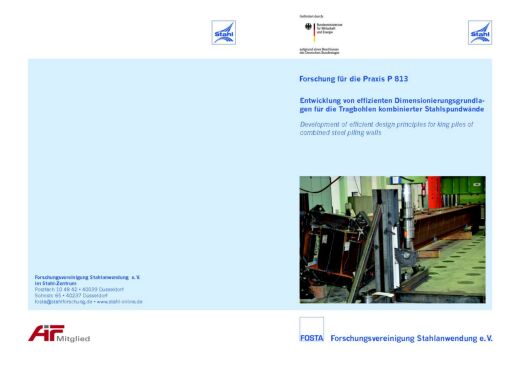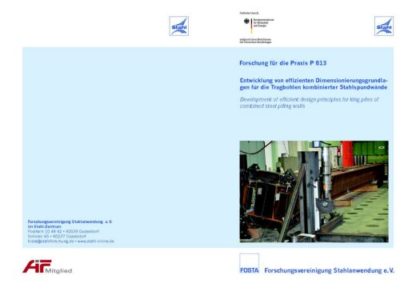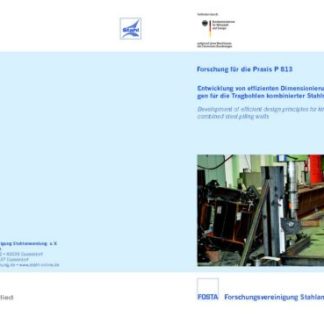Description
P 813 – Development of efficient design principles for king piles of combined steel piling walls
With the steadily increasing world trade, among the last decades the number of containerstransported raised and the vessels were enlarged. Hence the demands on the sizeof the quay walls of port facilities grow as well. The most common structural steel solution in deep water harbour area is the combined steel piling wall, which consists of up to 45 m long H-shaped bearing piles and Zshaped intermediate piles. For this kind of construction a stability check is necessary. With the change in the standards from the national DIN 18800 (2008) in Germany to the European EN 1993-1-1 (2010), the stability verification of steel constructions has changed. While previously separate verification of flexural buckling and lateral torsional buckling could be performed, there is now a combined design formula for stability. Sample calculations have shown that this leads to more massive harbour constructions.
Currently, the structure-soil interaction is not taken into account in the calculations. The scope of this project was to estimate the influence of soil on the piles and the development of ways to incorporate previously overlooked beddings. First, a parameter field wasmarked out considering the current situation and the developments in the near future in Europe. Attention was paid to pool depth and soil conditions as well as structural variations of the steel piling wall and the load impact. Experimentally, the deformation behaviour of an embedded single king pile and the behaviour and stiffness of the surrounding sluiced sand were determined. With the values, a truss model was created, leading to an investigation and the determination of attachable soil properties. Parallel, the effects of imperfections and soid bedding on the stability behaviour of king piles were examined. Single and double king piles, different bearing conditions (especially bedding over the full pile length or parts of the length) were considered as well as flexural buckling and lateral torsional buckling behaviour. Additionally, the influences of welding scheme and degree on the torsional stiffness of partially welded double bearing piles were investigated experimentally and numerically.
From the findings solutions have been derived that enable the designer to take an existing soil bedding into account when performing the stability analysis. Finally, simplified criteria were derived from the soil properties, the formulas for the inclusion of the values in the stability design and verification formulas from EN 1993-1-1, 6.3.3 (2010). These criteria enable the exclusion of buckling about the minor axis and lateral torsional buckling. In summary, one can say that by using detailed experimental and numerical investigations, the soil-structure-interaction of combined steel piling walls was investigated. Detailed approaches and simplified criteria making it possible to take the influence of the soil into consideration when performing the stability verification of king piles were developed.
The research project (IGF-Nr. 16066 N) has been carried out at Universität Stuttgart, Institut für Konstruktion und Entwurf and at Technischen Universität Hamburg-Harburg, Institut für Geotechnik und Baubetrieb. FOSTA has accompanied the research project work and has organized the project funding from the Federal Ministry of Economics and Technology through the AiF as part of the programme for promoting industrial cooperation research (IGF) in accordance with a resolution of the German parliament.
Only available in german language.
Authors:
U. Kuhlmann, B. Leitz, A. Just, J. Grabe, C. Schallück
Published in:
2014




